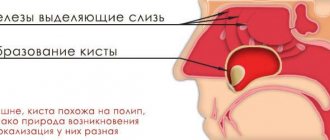Infectious disease specialist
Sinitsyn
Olga Valentinovna
33 years of experience
Highest qualification category of infectious disease doctor
Make an appointment
HIV (human immunodeficiency virus) is a virus that attacks the body's immune system. More precisely, it targets certain immune cells and kills them. The longer and more active this process lasts, the weaker the immune system becomes - over time, it is simply unable to cope even with infections that are relatively safe for an ordinary person.
If my partner tests negative for HIV, is he not infected?
Unfortunately, obtaining a false negative result is also possible. If your partner tests negative for HIV and you test positive twice, he or she needs to be tested again. According to information taken from AIDS.gov (an information portal on HIV/AIDS), the likelihood of obtaining a false negative test result depends on the length of time between possible exposure to HIV infection and the time of testing: “Seroconversion takes a certain time to occur. Seroconversion is the production of specific antibodies in response to the appearance of HIV. This process takes from two weeks to six months after infection. The work of the diagnostic test system is aimed at detecting antibodies. Therefore, if you test negative for HIV within three months of your last possible exposure, the CDC recommends testing again three months after your first screening test. A negative result indicates the absence of infection as a result of contacts that occurred more than six months ago. The accuracy of a negative result is certain if you have not been exposed to HIV infection in the past six months.”
Features of HIV infection
The human immunodeficiency virus is a retrovirus that causes an extremely slow progression of the disease, which often occurs without any significant symptoms.
The action of HIV infection is aimed at damaging blood cells, the so-called CD4 lymphocytes (T-helper cells). When it enters the body, the virus finds them, attaches to them and actively multiplies, infecting and capturing an increasing number of cells. The body cannot give HIV an immune response immediately after it enters the bloodstream, since the cells responsible for protecting against infection are affected first.
During periods of rapid development, HIV infection actively spreads throughout the body and, in addition to the already mentioned blood cells, affects macrophages.
HIV, having great variability, adapts very quickly to antiretroviral treatment, so at the moment it cannot be defeated.
How could I get HIV?
You will have to ask and answer this question repeatedly. You most likely became infected through contact with the blood or semen of an HIV-positive person. The most common ways of transmitting HIV include unprotected anal or vaginal sex, and sharing syringes and needles (whether the substance administered is a narcotic or a medication such as gender reassignment hormones). According to the Centers for Disease Control and Prevention, HIV infection can occur through exposure to blood and blood products, blood transfusions, or organ transplants, although “strict screening procedures for blood and organ donation in the United States keep this risk to an absolute minimum.”
Is it true that many HIV-positive people have hepatitis C?
Yes. In the United States, 25 to 30 percent of people living with HIV have hepatitis C (or HCV). This is a major concern because HIV accelerates the spread of HCV in the body, leading to earlier development of cirrhosis and end-stage liver disease. According to the Los Angeles Bureau of AIDS Prevention and Control, ways of transmitting HCV include sharing needles or personal items with blood residue (shaving or manicure utensils, toothbrushes, blood glucose meters), unsterile tattoo and piercing equipment, or sexual contact without using a condom with a person infected with HCV. The risk of contracting hepatitis C increases with rough sex, having a large number of sexual partners, and if you have HIV or sexually transmitted diseases. There is good news: although a vaccine against HCV has not yet been developed, there are modern effective treatments for hepatitis C. If one type of treatment fails, alternative treatment options are available that may help. Be sure to consult your doctor.
WHO activities
The World Health Assembly, at its sixty-ninth session, endorsed the new Global Health Sector Strategy on HIV 2016–2021. The Strategy includes five strategic directions to guide countries and WHO in their priority actions over the next six years.
These are the following strategic directions:
- information for targeted actions (understanding the scale of the epidemic and combating it);
- interventions to achieve impact (covering the full range of services needed);
- providing services in an equitable manner (reaching groups in need of services);
- financing for sustainability (financing the costs of providing services);
- innovation for acceleration (future-oriented).
WHO is one of the sponsors of the Joint United Nations Program on AIDS (UNAIDS). Within UNAIDS, WHO leads work on HIV treatment and care and co-infection with HIV and tuberculosis, and coordinates with UNICEF efforts to eliminate mother-to-child transmission of HIV.
If I am HIV positive, does that mean I have AIDS?
No, that's not true. People and even members of the media very often confuse HIV with AIDS or use these concepts interchangeably. AIDS, or late-stage HIV infection, will never develop in most HIV-positive people living in the United States. HIV is the virus that causes AIDS, but in most cases, proper treatment and regular medical supervision can prevent a weakened immune system and the development of AIDS. A positive HIV test result means only one thing: you are infected with HIV. AIDS is an independent disease, and many doctors prefer not to use this term, replacing it with the more understandable “third stage of HIV infection.”
Brief information about the pathogen
Penetrating into a woman’s body through vaginal or oral contact, the virus multiplies rapidly, blocking the functions of the immune system. Once the pathogen enters the systemic bloodstream, all organs and systems become infected. However, at the stage of infection, the woman does not become sick, but only a carrier of the virus, which she can infect her sexual partners with.
It is impossible to become infected through everyday contact; outside the host’s body, the virus dies in a matter of minutes.
If HIV is detected in a pregnant woman, the child will be infected in utero or during labor; the possibility of infection during breastfeeding cannot be ruled out.
A carrier of the infection is considered sick when symptoms characteristic of AIDS appear, which corresponds to acquired immunodeficiency syndrome. The influence of the external environment is detrimental to the pathogen, therefore it is able to penetrate into the female body in the following ways:
- during blood transfusions, injections;
- on the occasion of manipulations that can injure the skin;
- during sexual intercourse without protection.
During the incubation stage, which lasts from a month to a year, intensive reproduction and growth of the virus colony occurs. 3 months after infection, the phase of active antibody production begins in the body of an infected woman. The symptoms of HIV in this phase are similar to the symptoms of a cold or flu.
I will die?
Yes, but not tomorrow and not because you have HIV. The fact is that with proper treatment, HIV-positive patients can live as long and fulfilling lives as healthy people. You are much more likely to die in a car accident than to die from HIV. Of course, as with any chronic disease (such as diabetes), you may develop certain complications. In addition, you may be susceptible to various diseases, like everyone else. There is evidence that long-term use of antiretroviral drugs, which must be taken by HIV-positive people, increases the risk of early development of certain age-related diseases, such as osteoporosis. However, do not forget that adherence to treatment will allow you to live a long and active life despite HIV.
The first signs of the disease: symptoms in the early stages
The treacherous nature of the infection lies in the fact that HIV in its early stages either proceeds latently (that is, with virtually no initial symptoms) or is mistaken for another disease with similar symptoms. According to some statistics, in the female population, signs of HIV appear more clearly, and therefore diagnosing the disease is noticeably easier. Such consolation may be weak, but it certainly inspires clear hope for a more favorable outcome. What are the initial signs of HIV in women infected with this disease?
This is the problem: neither on the 1st day after contracting HIV infection, nor on the 5th, and in general, during the first 2 weeks, a woman may not even realize that a terrible infection is developing inside her .
But in the period between the 2nd and 6th weeks from the start of the virus entering the body, the first symptoms of HIV may manifest themselves as the following:
- an infected woman suddenly develops a high (up to 38-40 °C) body temperature;
- the condition is aggravated by signs of chills, fever, general loss of strength, muscle pain;
- the following changes occur in the digestive system: diarrhea that occurs without prior dietary disturbances, nausea, and sometimes vomiting;
- a woman's night sleep is accompanied by increased sweating;
- menstruation, if it occurs during this period, occurs more abundantly, and increased intrapelvic pain joins the pathology (what to do with painful periods is described here);
- lymph nodes located in the neck, armpits or groin area (and possibly simultaneously in all these places) increase significantly in size; at an early stage, the symptom may not be visualized, but is easily detected by palpation;
- this condition can last from 2-3 days or more, but not longer than 7-10 days;
- recurrent fungal infections of any location; shingles.
Due to the similarity and non-uniqueness of the symptoms of HIV, in the early stages they are mistaken for colds, flu, mononucleosis, and so on, which they prefer to treat independently at home. But consultation with a doctor should not be neglected in any case, because only if HIV infection is detected at an early stage and undergoes adequate treatment, the disease does not become a death sentence.
When should treatment begin?
Right now. Treatment should be started as soon as possible, preferably on the day of a positive HIV test result. Early initiation of HIV treatment results in significant long-term benefits. But even if there are no symptoms, the infection weakens the immune system. According to scientists, delaying the initiation of antiretroviral therapy leads to an increase in the volume of hidden reservoirs of HIV infection. In contrast, early treatment reduces viral load. The level of virus in the blood may drop to below detectable levels, at which the likelihood of transmitting HIV to a partner is extremely low. So get a prescription immediately and start taking the medications.
How the disease develops, stages and symptoms
HIV infection has certain stages of development. The processes occurring at one time or another have their own timing and manifestations. 1. Incubation stage. It begins from the moment of infection and lasts from 2 weeks to 3 months. Depending on the state of a woman’s immunity, the first stage of HIV infection can last up to six months or even a year. During this period, the virus cells actively multiply and spread throughout the body's systems through immune cells, which in turn produce antibodies to HIV infection. Making a diagnosis at this stage is difficult; the first symptoms of HIV at an early stage are subtle and episodic; the body's protective functions begin to decline.
2. Stage of primary manifestations. Its average duration is about 1 year, in some cases the duration of the period can vary from 2 weeks to several years. At this time, HIV viral cells continue their aggressive invasion of the body, and the immune system, in turn, actively produces antibodies. The first manifestations of HIV symptoms occur: fever, long-term acute respiratory viral infections, influenza. Susceptibility to disease increases, lymph nodes become inflamed and increase in size, and disruptions begin to occur in the digestive system.
3. Latent stage (or incubation). The longest, asymptomatic and insidious period of the disease. It lasts from 2 years, in some cases up to 2 decades. Symptoms of HIV infection appear extremely rarely; a woman lives a normal life, unaware of the harmfully developing pathology. At this stage, the immune system launches various compensatory processes, and the HIV virus, despite the absence of any symptoms of HIV, inexorably spreads and causes irreparable harm to the entire body as a whole.
4. Stage of secondary diseases (or pre-AIDS). At the moment of its achievement, the woman’s immune system is completely exhausted, she has exhausted all her compensatory mechanisms and is unable to resist any infections. This is a time when the first symptoms increase significantly, the exacerbation of hitherto hidden pathologies, and the body’s loss of protective functions. Symptoms can be expressed in sudden weight loss and constant diarrhea, complete exhaustion and dementia, skin damage, and so on.
5. Terminal stage (or AIDS). The last stage of the disease, called acquired immunodeficiency syndrome, ends in death. Accompanied by extensive damage to all systems and the progression of serious illnesses. It is completely irreversible and lasts from 1 to 3 years.
Therapy for the disease is usually prescribed by immunologists or infectious disease specialists.
Should I take antiretroviral drugs every day?
All life? Yes and no. According to a study conducted in 2015, only when early treatment is combined with regular medication intake does the ratio of CD4 to CD8 cells become close to normal. The closer this indicator is to normal, the more cells fight HIV and give you strength, health and life expectancy as a person without HIV infection. These tangible health benefits should not be overlooked. However, both doctors and pharmaceutical companies understand that the need to take medications every day becomes a real challenge, and therefore they are developing new treatment options. A study this year found that injecting the drug twice a month is as effective as taking a pill every day (although it may take one to two years before such drugs are sold in pharmacies). Yes, you'll have to stick to your treatment religiously for now (think of it as going to the gym or taking your daily vitamins), but that doesn't mean you're doomed to take pills every day for the rest of your life.
Diagnosis and therapy prescribed to patients with the mentioned diagnosis
Indicators of the development of the disease are initially reflected in the acute stage of HIV , when erroneous diagnoses such as colds, etc. can be made. Without giving importance to diagnosis, the transition to the latent period occurs quite quickly. There is no need to confuse the concepts of HIV and AIDS. HIV is a virus and AIDS is a serious disease. In view of these factors, it is so important to carry out preventive examinations of patients in a timely manner to prevent the spread of a dangerous disease. If diagnosed early, life expectancy can range from 20 to 50 years. If the disease is at the last stage of development, and the necessary therapy is not carried out, then life expectancy is no more than 6-9 months. Thanks to this article, everyone can answer the question of how to find out that you have HIV .
How can I protect my sexual partners?
There are different ways to protect yourself and your partner. Discuss your HIV status and its risk of transmission honestly and thoroughly. Always use a condom and have sex with a partner using pre-exposure prophylaxis (PrEP). Monitor viral load to remain below detectable levels. Even the correct choice of condom lubricant is important (avoid two components: polyquaternium and polyquaternium-15, as both types of polymer increase the risk of HIV transmission).
What does “treatment as prevention” mean?
Treatment with antiretroviral drugs reduces the concentration of the virus in the blood. The goal of therapy is to reduce the “viral load” to such a low level that “the virus cannot be detected in the blood.” Large studies have been conducted involving homosexual and heterosexual discordant couples in which only one partner was HIV-positive. The results show that when an HIV-positive partner's viral load drops below detectable levels, the risk of transmitting the virus does not exceed 5 percent (even without using condoms). As your health improves, your chance of passing HIV to someone else decreases. If everyone living with HIV got the treatment they need, we could prevent most new infections.
Causes of HIV
The human immunodeficiency virus did not exist until the end of the 19th century. A similar virus was present in the blood of monkeys that inhabited the African continent.
It is believed that the first transmission of viruses occurred during the hunting of monkeys. Hunters who killed animals and butchered their carcasses became infected with an unknown disease. Scientists have proven that the likelihood of infection directly depended on the frequency of interaction with the meat of infected apes.
At the same time, the monkey immunodeficiency virus does not live long in the human body. It is easily suppressed by the immune system. This happens literally within a few weeks. Therefore, before taking root in a new organism, the virus mutated. This required several successive transmissions from person to person within a short period of time.
It is assumed that the flourishing and spread of the human immunodeficiency virus throughout the world was facilitated by the active colonization of the countries of the African continent. The appearance of colonialists in Africa, the growth of cities and population with new foundations and a craving for the exotic, contributed to the development of prostitution, and promiscuity was a frequent occurrence. As a result, more and more people became infected. Many went back to Europe and America, contributing to the spread of HIV in other regions.
Another way of spreading HIV infection was the use of injections and surgical procedures with insufficiently sterilized medical instruments.
What is the risk for people who use non-injecting drugs and alcohol?
People who use non-injecting drugs and alcohol are more likely to engage in risky sexual behavior and unprotected contact. Many people who use drugs or alcohol primarily choose sexual partners from within their social circle. This may include people who have injected drugs, had sex for money or drugs, were victims of a traumatic situation, or have been in prison. In all of these vulnerable groups, the risk of HIV transmission is high.
Read the continuation of the article at the link.











